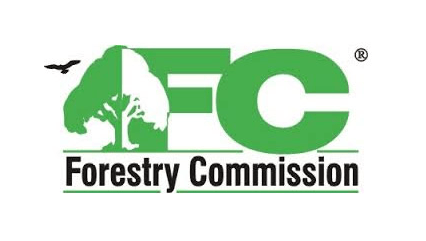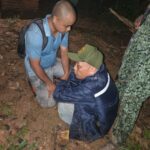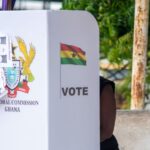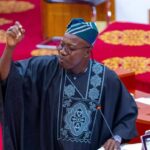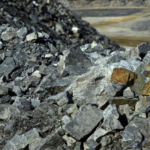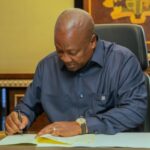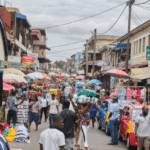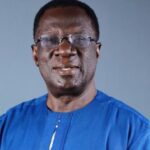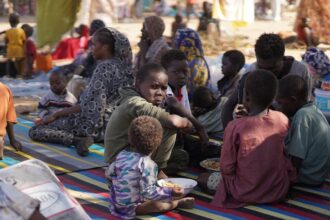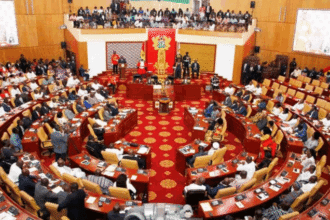The Forestry Commission of Ghana has parried aside a publication by the World Resources Institute’s (WRI) website that suggests the world has lost a large quantity of its primary rainforest last year.
The Commission insists the publication on the WRI website contains a lot of misrepresentations and exaggerations and does not represent the actual situation on the ground.
It maintains that a number of initiatives have been put in place to address challenges confronting Ghana’s forestry sector for the benefit of present and future generations.
The Commission in a rejoinder to the WRI publication under the headline; The World Lost A Belgium-Sized Area of Primary Rainforest Last Year, said “we wish to state that the conclusions arrived in the publication are based on a faulty methodology as well as a misunderstanding of current controlled agricultural practices in Ghana.”
The rejoinder, signed by the Chief Executive Officer of the Forestry Commission, Mr Kwadjo Owusu Afriyie noted that the WRI publication, from which media houses worldwide are deriving their stories, was based on research conducted by the University of Maryland in the United States. According to the rejoinder, a comparison of the data that have been churned out by the original researchers with what WRI published “suggest an exaggeration of the actual situation on ground and as found in the research.”
Below is the full rejoinder from the Forestry Commission
Rejoinder: The World Lost A Belgium – Sized Area Of Primary Rainforest Last Year
The attention of Forestry Commission has been drawn to a publication which first appeared on the World Resource Institute’s website (www.wri.org) on 25th April, 2019, on the above subject.
Same has been published on other media portals worldwide. We wish to acknowledge the challenge of illegal mining and farming practices as drivers of deforestation and forest degradation. Ghana is indeed not alone in this fight to keep the forest heritage for the present and future generations. A number of initiatives, has accordingly, been put in place to address this challenge. While acknowledging this, we wish to state that the conclusions arrived at in the publication are based on a faulty methodology as well as a misunderstanding of current controlled agricultural practices in Ghana.
We note that the WRI publication, from which media houses worldwide are deriving their stories, was based on research conducted by the University of Maryland in the United States. A comparison of the data that have been churned out by the original researchers with what WRI published suggest an exaggeration of the actual situation on ground and as found in the research. We therefore, wish to correct all erroneous impressions that have been created by this publication. The Commission will like to state that:
- The presentation of forest given in the WRI publication, as well as the methodology used in the research suggests that what has been reported is relative annual change in tree cover and not forest cover. The University of Maryland defined tree cover as “all vegetation 5m in height and may take the form of natural forests or plantations across a range of canopy densities”. This definition therefore implies agricultural tree crops such as cocoa, cashew, rubber, among others, have likely been captured whereas the definition of forest cover excludes these agricultural tree crops. It must be noted that there is a significant difference between the two and the interchange of terminology can lead to grossly misleading conclusions.
- The WRI report indicates a 60% change in annual loss and not a 60% loss of forest cover in one year (2017-2018) as is being discussed on various media platforms across the country. A further interrogation of the original research data however indicates this figure to be 31.3%. The Forestry Commission intends to write to the WRI to correct this error in the analysis of the original research data.
- The caption used for the report was misleading in that WRI used forest cover instead of tree cover. The use of the term ‘primary forest’ is not explained in the context of the article. Primary forest is defined as “Naturally regenerated forest of native species, where there are no clearly visible indications of human activities and the ecological processes are not significantly disturbed” (FAO, 2015). Therefore, the study setting the minimum tree cover at 30% does not represent primary forest.
It is worthy of note that since 2018, an Initiative that seeks to improve cocoa farms in the various cocoa growing areas with the clearing of unproductive trees and their replacement with seedlings of high – yielding varieties has been running.
Similarly, under the Canopy Substitution Strategy of the Cashew Development Project, which has been introduced to cashew farmers low-yielding varieties are cut down and replaced with seedlings of high – yielding ones.
Another point worth noting is that some farmers have been cutting down their cocoa trees to make way for rubber plantations. This cannot be classified as deforestation because cocoa farms are not considered as forests.
Cumulatively, the satellite capture of the tree cover change under these initiatives have been misrepresented as primary forest cover loss.
Major Interventions
Forestry Commission has put in place a number of interventions to improve forest cover.
- REDD + is an internationally accepted mechanism to combat climate change. As part of REDD+ interventions, there is massive implementation of Climate Smart Cocoa Practices which involve increasing shade on cocoa farms; setting up of rural service centres for easy access to farm inputs; increased cocoa extension services and replanting of old cocoa farms; establishment of viable additional livelihood schemes and, improved planting design for yield increment and improved livelihoods.
The cocoa private sector and the Government of Ghana have also signed onto the Cocoa and Forests Initiative to halt deforestation in the chocolate and cocoa supply chains by promoting climate smart cocoa practices.
- Another key initiative to help combat illegal logging is the Voluntary Partnership Agreement (VPA) with the European Union. Under this Initiative, Ghana is strengthening its law enforcement capacity by developing a robust wood traceability system. This system has introduced an electronic capture and reconciliation of timber transaction data in a manner that allows the tracing of timber from the point of sale to its source. By allowing only timber that is traceable for sale, illegally logged timber is largely eliminated from the supply chains.
- Community Resource Management Area (CREMAs) Concept is an intervention that seeks to empower forest fringed communities to increase their sources of livelihoods as a way of diverting their attention from forest illegalities. This mechanism seeks partly to put the management of the natural resource in the hands of the communities thereby giving them a sense of ownership. It helps to protect the natural resource, while at the same time putting money in the pockets of the fringed communities.
- The FC has been developing extensive forest plantations in collaboration with different stakeholders (private sector, forest-fringe communities, etc.) under the National Forest Plantation Development Programme (NFPDP) with field implementation commencing in the year 2002. An estimated 160,000 ha of forest plantations was established under the NFPDP as at the end of 2016. In November 2016 the FC and the Ministry of Lands and Natural Resources launched the Ghana Forest Plantation Strategy (GFPS), a 25-year initiative to restore our degraded landscape and secure future supply of industrial timber for industry. Under the GFPS government and the private sector aim to among others, establish annually 25,000 hectares of forest plantations using various approaches; restore 5,000 ha of degraded forest reserves through enrichment planting using indigenous tree species; and to facilitate the planting of economic timber trees within farming systems covering an area of 150,000 ha. This is in line with our national aspirations and international commitments to help in the fight against poverty and Climate Change by accelerating efforts towards the restoration of our degraded landscapes under the Bonn Challenge, African Forest Landscape Restoration Initiative (AFR 100), United Nations Sustainable Development Goals (SDGs), etc.
- In line with the GFPS, the President, His Excellency Nana Addo Danquah Akufo-Addo last year launched the Youth in Afforestation Programme which has employed over 60, 000 youth, who hitherto were unemployed, to help in afforestation/reforestation projects throughout the country. Since its inception in April 2018, it has culminated in the planting of over 10,000 ha by the end of 2018.
- Another intervention worth noting is the Modified Taungya System (MTS), which is a form of agro – forestry. Degraded portions of forest reserve land are allocated to farmers to plant trees, while intercropping with foodcrops. When the tree canopy begin to close, usually after three years, the farmers are moved to other degraded areas to do same.
To improve farmer income and ensure their active engagement in the management of the plantations after tree canopy closure, the Forestry Commission is piloting the cultivation of shade tolerant crops under the WOTRO Trees on Farm Programme where crops such as Grains of Paradise and Black Pepper have been introduced to farmers to once again give them sources of income, as they nurture the trees. Honey production is also another aspect of this programme.
- To ensure effective enforcement of forest and wildlife laws, the Rapid Response Unit has been set up to operate in hot – spot areas of forest illegalities. Their operations have helped reduced illegalities.
- Closely related to the point above is that frontline staff of the Commission have undergone military training at the Asutuare Military Camp. This is to hone their skills in forest protection and clamp down on forest illegalities.
Forestry Commission Forest Data (2012 – 2018)
From 2012 to 2018, data analysed over the period indicates that at the end of 2012, total area under forest cover in Ghana was 6,235,102.32 ha. This figure increased to 6,357,876.03 ha at the end of 2018. This shows a marginal increase of 1.96% in total forest cover over the period (Table 1). The increase in the open forest could be attributed to the on-going plantation development drive by both public and private sectors as well as the natural regeneration of fallows or fire-prone areas
Where effective wildfire awareness and education by the FC and other collaborators is beginning to yield positive results.
Conclusion
Forestry Commission holds on to its mission to “Sustainably develop and manage Ghana’s forest and wildlife resources”. It will therefore continue to engage in forest improvement and protection activities to restore Ghana’s forest cover.
By Mohammed Suleman


